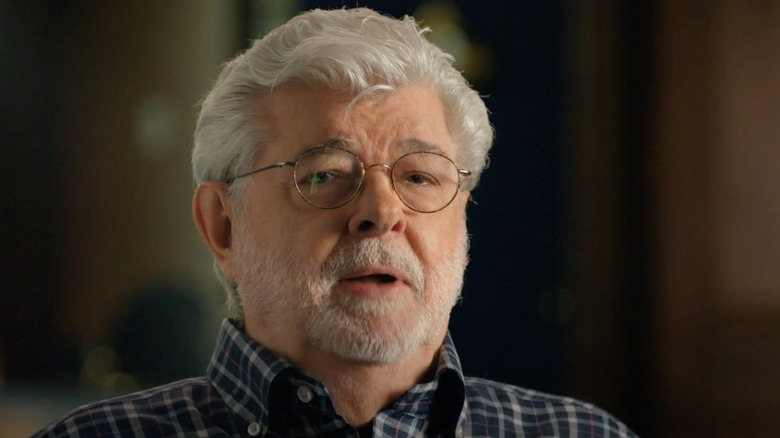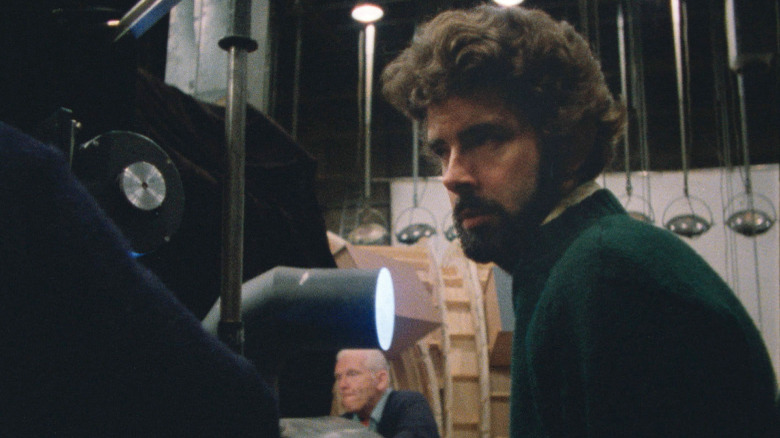How Light & Magic Led Director Lawrence Kasdan To New Insights About George Lucas
It's easy to dismiss George Lucas as the filmmaker who struck gold with "Star Wars" and "Indiana Jones," then spent the rest of his career coasting on the success of those mega-popular franchises (not that anyone could blame him for doing just that). In truth, however, Lucas has never stopped pushing the envelope as an artist, even when it comes to his biggest hits. Indeed, for all the flak he's gotten — some of it, admittedly, deserved — for prioritizing the advancement of CGI and digital filmmaking over the story in his "Star Wars" prequel trilogy, there's also no denying just how revolutionary those movies were in terms of their many technical achievements.
The docu-series "Light & Magic" further illustrates the impact Lucas has had on the film industry by exploring the history of his visual effects company, Industrial Light & Magic. As seen in the six-part project, what began as a ragtag team of hippie types and weirdo tech enthusiasts assembled by Lucas and John Dykstra in 1975 has gone on to become a powerhouse responsible for shaping the very way movies are made over the last 50-odd years. Even the series' director, Lawrence Kasdan, owes his career to Lucas after the filmmaker entrusted him with the task of writing not just one but two of the most revered blockbusters in Hollywood history.
If watching "Light & Magic" makes you feel like you've never fully appreciated Lucas' contributions to the art of cinema, don't feel bad: Kasdan himself has admitted he was guilty of the same thing, prior to directing the show.
'I didn't understand fully how important George was to everything'
The rise of the blockbuster with "Jaws" and "Star Wars" in the 1970s led directly to changes in the ways movies are crafted over the decades that came after, paving the way for the modern era in which digital filmmaking reigns supreme and visual effects artists are more important than ever (despite how much, ahem, certain studios seem to perceive them as disposable). In an interview with The Wrap, Lawrence Kasdan explained how, by making "Light & Magic," he came to realize the series is just as much George Lucas' story as it is the story of ILM and its role in all this:
"I didn't understand fully how important George was to everything. No one said to him, you have to figure out digital, you have to figure out a new way to edit, a new way to make sound, a new way to project film, a new way to compile it, no one said that. He said, 'I want to do those things. And I'm going to find the people that will help me do those things.'"
Filmmaking has always been a collaborative art form, and no one knows that better than Lucas, who wouldn't be where he is today if ILM alums like John Dykstra, Phil Tippett, Joe Johnston, Dennis Muren, and so many others hadn't worked their, well, magic on the very first "Star Wars" movie all those decades ago. Lucas' legacy is as much his own as all those he's worked with and vice versa — a point that "Light & Magic" very much serves to drive home. It's also a lesson many people (not least of all studio executives) would do well to take to heart.
"Light & Magic" is now streaming on Disney+.

